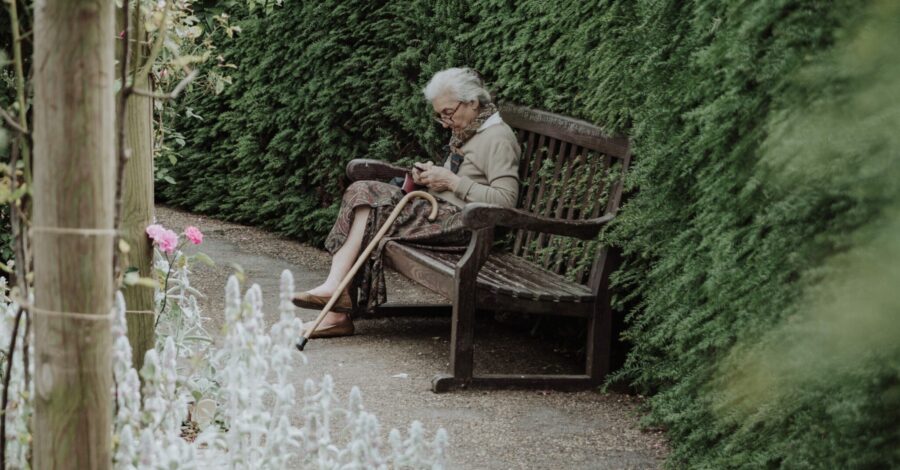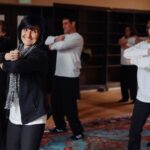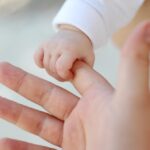
East vs. West: Osteoporosis
In this series, we’ll look at various health conditions from both the Eastern and Western viewpoints.
Western Point of View
Bones are living, growing tissue made of collagen, calcium-phosphate mineral complexes and living bone cells whose function is to replace weakened bone. Existing bone is constantly being replaced by new bone. Your entire skeleton is replaced about every ten years. Osteoporosis means “porous bone.” The healthy honeycombed structure of bone begins to change when its holes and spaces become bigger. This causes bones to become weaker, thinner and more likely to break.
According to the NIH’s National Library of Medicine, “Osteoporosis is a disease in which bones become fragile and more likely to fracture. Usually the bone loses density, which measures the amount of calcium and minerals in the bone.” This condition occurs when the body fails to form enough new bone, when too much existing bone is reabsorbed by the body, or both.
Osteoporosis is considered the most common type of bone disease. About one in two women over age 50 will break a bone because of it. Of the estimated ten million Americans with osteoporosis, about eight million or 80 percent are women. Western research points to a decrease of estrogen as a factor in women and testosterone in men. Osteoporosis is common. It is also serious and costly.
Twenty percent of seniors who break a hip die within one year from problems related to the broken bone itself or surgery to repair it. Today, osteoporosis is responsible for two million broken bones and $19 billion in related costs yearly. By 2025, experts predict this will increase to approximately three million fractures and $25.3 billion in costs yearly.
Western Treatments
People with osteoporosis are often prescribed medication(s) to help strengthen existing bone. Some of these medications are daily or weekly pills, while others are monthly infusions. The National Osteoporosis Foundation also suggests limiting alcohol, stopping smoking, ingesting the proper amount of Calcium and Vitamin D and adding a daily exercise regimen to increase bone density.
Eastern Point of View
At a certain age, why does the body begin to lose bone, its hardest and most durable substance? What’s really happening? From the TCM perspective, osteoporosis represents a serious Qi deficiency.
Many people like to buy cars, jewelry and so on. But, if you are in a position where you need cash, you have to sell or liquidate some of your assets. The body performs a similar function when it has serious energy demands.
The Kidney stores the Qi you inherited at birth. When you are young, your Kidney Qi is strong and the amount of Qi is high. That’s why kids usually recover from falls quickly. As humans age, energy levels decline and Kidney function requires more support. Over time, the quality and structure of bone changes. For women, Kidney Qi declines in seven-year cycles. When women reach the age of menopause, Kidney Qi no longer functions at its highest level. Bones break more easily and take longer to heal. Why? Because the body doesn’t have as much Qi as it had previously to heal the bones quickly.
When the body has no other reserves of Qi, it asks the bone for more so it can maintain its functions. The result is osteoporosis. Most times, the “hardware” of the physical Kidney may be fine, but the organ’s “software” has become weaker. Its battery lacks a big enough charge to manage all its functions, one of which is to maintain healthy bone structure. The Kidney doesn’t have enough juice to keep the battery charged.
Eastern Point of View: Five Element Framework
Emotions have a significant impact on the body. The energetic frequency of Kidney’s emotion is fear. Deep down, the person with this condition is likely engulfed with many fears regarding aging, finances, body changes, and family situations. Fear is an energetic frequency that constantly steals Qi from the bone.
But the spiritual perspective provides the root cause of osteoporosis—lack of faith. Our society is based on the negative energetic vibration of fear. Even achieving good health is based on fear. This subtle, pervasive fear continually saps Kidney Qi. But remember, fear is not based on the current reality. It is based on what “might” happen. Have faith that everything is unfolding as intended.
Hot flashes are a telltale menopausal symptom. They are like the body’s smoke detector. Hot flashes either warn of smoke or indicate fire. Energetically, hot flashes are the body’s way of communicating a Qi deficiency. Most menopausal women recognize that their hot flashes increase if they are under a lot of stress. The more stress they experience, the more frequent the hot flashes. If these symptoms are not alleviated and if Qi is not conserved and increased, the condition can progress to bone loss.
Eastern Treatment
Taking supplements might not work quickly enough to stop bone loss. Why? No matter what you put into your body, it has to undergo the five stages of metabolism function in order to be useful to the body. This complete digestive function applies to emotions and information as well. This process requires Qi so the energetic aspect of the supplement can support the Kidney.
Prevention is key. To help prevent osteoporosis, look at the areas of your life where you make massive Qi or energy expenditures—from the physical to the emotional. Are you constantly in motion or do you find time to relax? Do you eat fried foods and iced drinks or do you support your Kidney function with roasted walnuts and fresh fish? Can you identify how fear impacts you? Do you practice Qigong to gain additional Qi from the unlimited source of the Universe?
Identify your “energy expenses” so you can conserve the amount of Qi you expend every day. Or, better yet, find ways to avoid situations that zap you. Whether life has given you a tall candle or a short one, it’s how you manage the flame that counts. At the spiritual level, osteoporosis is about fear and its impact on Kidney function and its multiple body–mind–spirit responsibilities, which include managing bone health.









